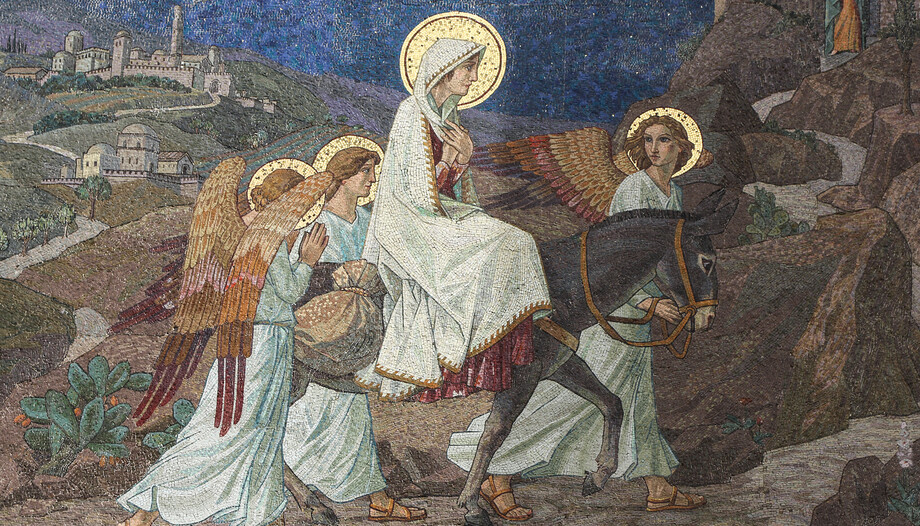From December 17 to 24, close to the liturgical celebration of the feast of ChristmasThe Church invites us to pray with a specific preface, Preface II of Advent, which emphasizes the contemplation of the events surrounding the first coming of Christ, inviting God's people to joyful vigil and exultation in praise.
"Quem prædixérunt cunctórum præcónia prophetárum, Virgo Mater ineffábili dilectióne sustínuit, Ioánnes cécinit affutúrum et adésse monstrávit. Qui suæ suæ nativitátis mystérium tríbuit nos præveníre gaudéntes, ut et in oratióne pervígiles et in suis invéniat láudibus exsultántes".
"For whom all the prophets proclaimed, the Virgin awaited with ineffable motherly love; John proclaimed him already near and then pointed him out among men. The Lord himself grants us now to prepare ourselves joyfully for the mystery of his birth, so that when he comes, we may find ourselves watching in prayer and singing his praise".
It is a newly composed text, based on a very old preface, dating back to the 4th-5th centuries and preserved in the Veronese Sacramentary. Some elements of this ancient text have been added to others from other sources, to give shape to a very beautiful and balanced text.
It consists of two parts; the first has Christ as its subject, who is the object of the announcements of the prophets ("cunctorum praeconia prophetarum"), is the object of the ineffable love of the Virgin, who awaits him and carries him in herself, and is the object of the preaching of John the Baptist, who also had the task of pointing him out as the Lamb who takes away the sin of the world (cfr. Jn 1, 29).
Compendium of salvation history
Here too, as in the first Advent preface, we find ourselves before a kind of compendium of salvation history, which is summarized through some particularly illuminating points.
The preparation for the coming of Christ in the flesh begins with the prophets, as the Letter to the Hebrews reminds us: "In many and various ways God spoke of old to the fathers by the prophets. In this final stage, he has spoken to us through the Son" (Heb 1:1-2). The first readings of the Mass for the days between December 17 and 24 contain prophetic pericopes, such as the famous prophecy of Is 7:14 ("Behold, the Virgin is with child and bears a son, and she shall call his name Emmanuel"), but also the birth of figures who are types of Christ, such as Samson, Samuel, etc. The human adventure of the Son of God is inscribed in an ancient history characterized by the expectation of the Messiah.
Within this story of waiting, a prominent place is occupied by the Virgin Mother: it is not even necessary to say her name, because in this being the ever Virgin Mother of God is the figure of Mary's greatness, who with unspeakable love was willing to bear the sweet burden of pregnancy in order to give birth to the Messiah.
Finally, in last place among the prophets of the Old Covenant, mention is made of John the Baptist, who with his prophecy (cf. Mt 3:11) and his pointing out of Christ present in the world (cf. Jn 1:29-31.34) closes at the same time the old time and inaugurates the new.
The second part of the Preface, on the other hand, is characterized by Christ as the subject, and the dominant theme is the preparation for the reception of Christ by his people. Thus we move from the contemplation of the historical expectation of the Messiah to an indication of the attitude proper to those who today await the liturgical celebration of the coming of the Savior. The theme of vigilance returns here, as in the Preface of Advent I, but here the emphasis is on the prayer that must accompany the expectation (cf. 1Pt 4:7) and the theme of joy, typical of Christmas time (cf. Lk 2:10), is also present.
Pontifical University of the Holy Cross (Rome)








